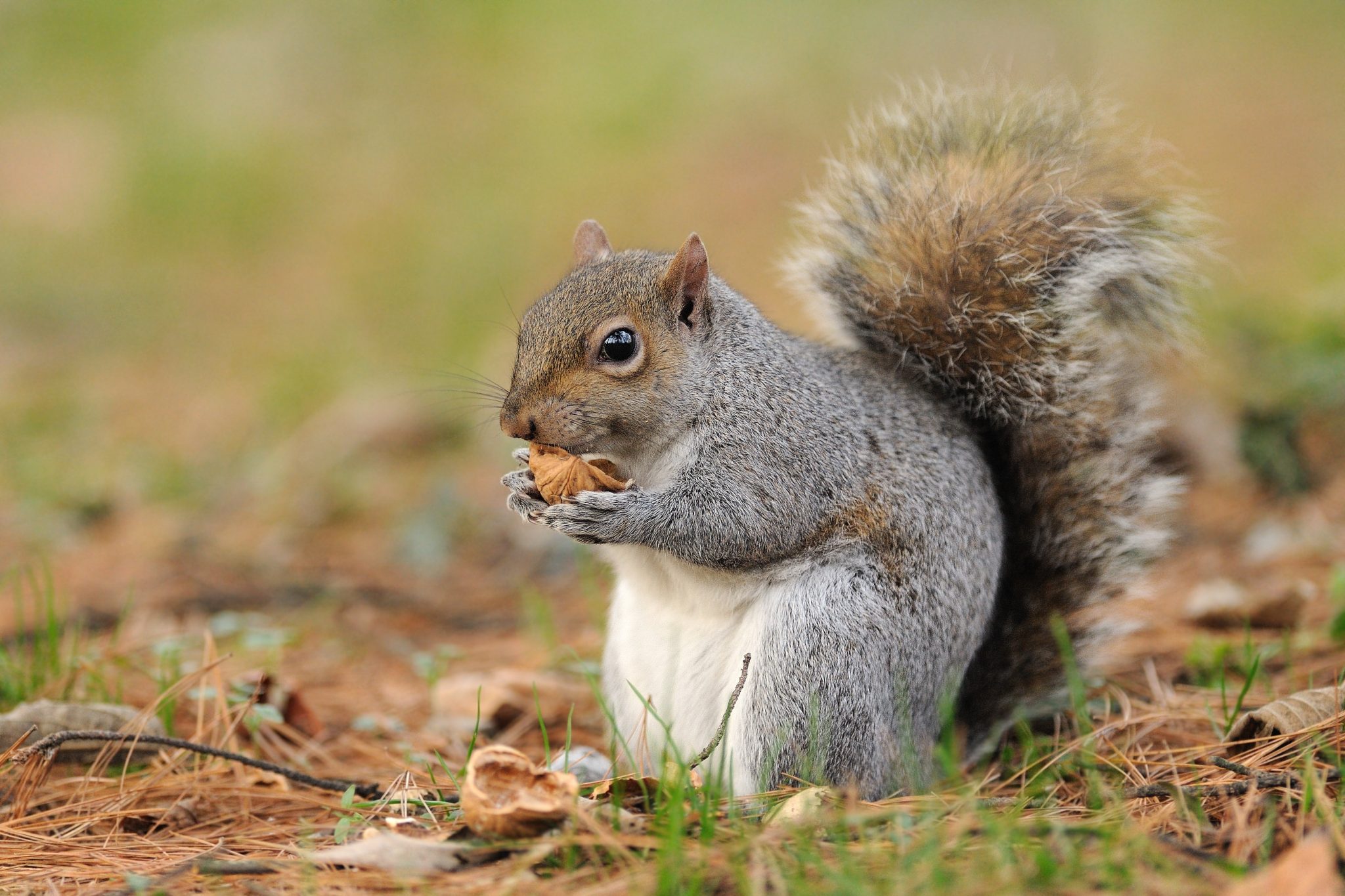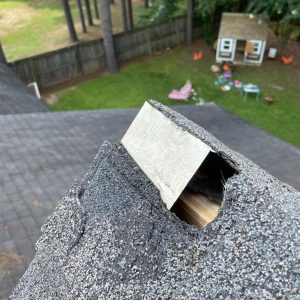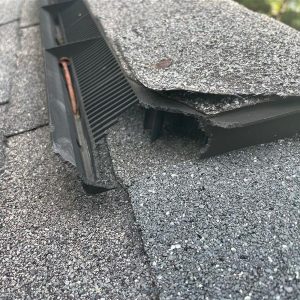Forestry & Wildlife

Eastern gray squirrels have a mixed reputation to homeowners. Some enjoy watching squirrels as they scavenge and cache seeds throughout their yard. Others, detest them for their habits of eating from bird feeders, scaring away birds, and instinctive gnawing on property. One of the biggest concerns from squirrels comes when they nest in attics of homes. Attics are warm, dry, and typically free from predators. Once inside, squirrels will gnaw on wiring, cache food, and cause health concerns with feces and urine.
There are several signs to look for if squirrels are entering an attic. Oftentimes, the first hint of a squirrel presence comes from rustling sounds. Homeowners might even hear grinding sounds as the squirrels gnaw on wiring, pipes, and rafters. Another sign of squirrel presence is remnants of pecans, seeds, and other nuts. Lastly, look for damaged siding, soffit, fascia boards, and ridge vents where squirrels might be gaining access.
Control Methods
Methods for controlling squirrel damage in the attic is divided into two categories, nonlethal and lethal methods. Nonlethal strategies include exclusion and live traps, while lethal control involves lethal trapping that will dispatch the squirrel when caught. An effective management strategy oftentimes requires the use of multiple control options.
Nonlethal Methods
Exclude access. Squirrels can jump fairly long distances. To exclude their access, keep trees and overhanging branches at least 8 feet from buildings.
Secure entrances. If squirrels have moved into a home, identify the entrance and secure with an exclusion funnel or one-way door. These devices allow the squirrel to leave the structure, but not re-enter. Once the squirrels have been successfully excluded, permanently repair the holes.
- Keep in mind that squirrels breed in February/March and July/August, and young squirrels will not leave the nest for 10 to 12 weeks. Excluding the parents during this time could result in mortality for the juveniles left inside the structure.
Trapping. Nonlethal traps–such as small box traps or glue traps–catch and hold the animal. Before trapping, consider how the animal will be handled after it is trapped. If released outside the home, it is likely that the squirrel will re-enter if the entrance hole has not been sealed. Also, it may become trap shy and much more difficult to catch again. Note. There are wildlife regulations in most states that prevent transporting and releasing a live squirrel to another site.
Lethal Methods
When triggered, lethal traps dispatch the animal quickly and humanely. The homeowner’s responsibility to dispatch the animal is typically removed when using this method. Effective lethal traps include large, rat-size snap traps and number 110 body-gripping traps. To increase effectiveness, both of these traps can be used with a bait. Bait can include items such as shelled pecans, peanuts, peanut butter, peanut butter and oatmeal, other types of nuts, or dried fruit. It is important to set these traps in areas that squirrels frequent most and secure them with nails or screws. Most states require that traps be checked every 24 hours.
After Control
After successfully controlling squirrels in the attic, it is important to examine the space to see if any repairs or cleanup is needed. Pick up any food particles or feces, replace any damaged wiring or pipes, and remove and replace any soiled insulation. Sanitize the attic space with an antimicrobial cleaner to remove the potential for any fungus or bacteria establishment.
More Information
Patience and persistence is one of the most important parts of managing nuisance squirrels. Focus on removing nuisance individuals, instead of eliminating populations. More detailed information on managing nuisance squirrels around the home is available in the Alabama Extension publication Controlling Eastern Gray Squirrel Damage.



